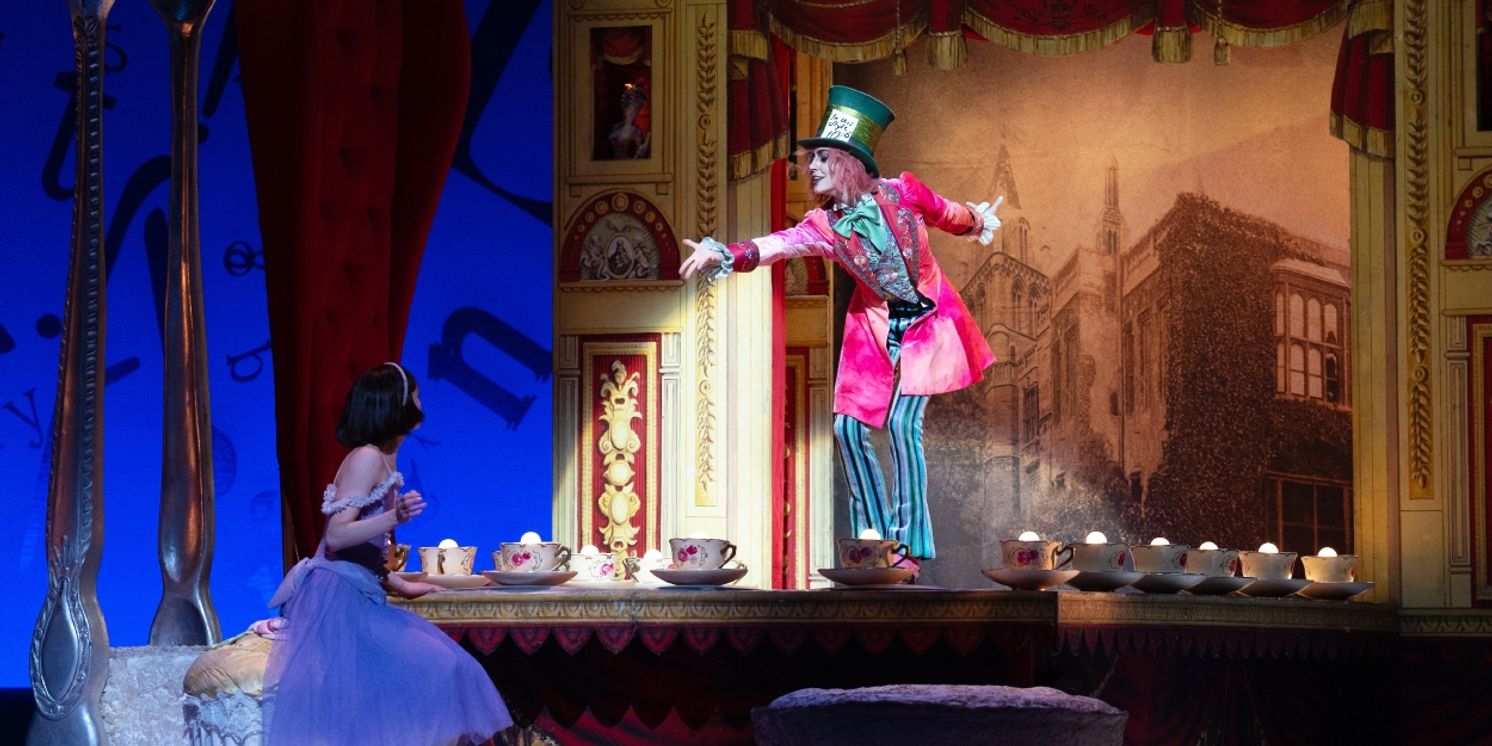Review: ALICE’S ADVENTURES IN WONDERLAND, Royal Ballet And Opera
More to savour

![]() Christopher Wheeldon's Alice's Adventures in Wonderland returns for a second block of shows at the Royal Ballet and Opera until 28 June.
Christopher Wheeldon's Alice's Adventures in Wonderland returns for a second block of shows at the Royal Ballet and Opera until 28 June.
The work opened the Royal Ballet's season back in September, and the production’s popularity continues to grow. As these London performances unfold, Alice is also being danced in Tokyo by the National Ballet of Japan and Chicago by The Joffrey Ballet. Both of these runs are premieres for each company, and the geographic placement should be considered for a moment: North America, the UK and Asia equals world domination.
It was great to see so many families at the opening performance on June 13, and this fact confirms that Alice has undeniable accessibility. Each walk down to the lobby after Act 1 and 2 finished were full of buzzy patrons discussing what had happened and why they loved it. Compliments were flowing.
As a piece of dance theatre, Alice has many strong points; Bob Crowley's vivid designs, including the use of multimedia. Wheeldon’s stylish choreography, a plethora of larger than life characters thanks to Lewis Carroll and magical moments in Joby Talbot's score.
%20in%20Alice%20in%20Wonderland%2C%20The%20Royal%20Ballet%20%C2%A92025%20RBO_%20Ph%20Andrej%20Uspenski.jpg?format=auto&width=1400)
Photo Credit: ©2025 RBO. Andrej Uspenski
Personally speaking, my issues with Alice are the same as they often are. I find the first two Acts too bitty, feeling bamboozled rather than engaged, and then Act 3 arrives and feels like the polar opposite: a well constructed narrative ballet within a ballet.
Why? Acts 1 and 2 have a lot of storytelling to do, with numerous changes of location, consequently the whole feels more like disconnected divertissement than a narrative, dance-informed thread. As mentioned, multimedia is used but I wonder if dance could be the missing link. Wheeldon’s Alice falls down a cake rather than a rabbit hole, but it isn't actually her falling. It's a puppet immersed in a projection. Effective? Sure. However the overall impact isn't deepened engagement, it's more character disconnection.
Act 3 works because it takes place in two key scenes - a garden and court, and both are centred around The Queen of Hearts. Wheeldon, after Carroll, has devised a brilliant character here. Part Monarch, Ballerina, Murderess and Drag Queen - if done well, it's absolutely worth waiting for. Mayara Magri debuted back in September, and she returns with a vivid take on the Queen. The comedy side is perfectly balanced and the dancing a marvel. She covers space like very few dancers and it's a joy to see.
Anna Rose O'Sullivan is a picture-perfect Alice, yet I find her character lacking. It needs more individuality - she's still to find her own Alice as it were. William Bracewell as Jack/The Knave of Hearts is divine. Bracewell's reading is very human - I don't think I've ever seen such an attentive partner. And it's interesting to consider the role was created on Sergei Polunin. The Knave's choreography is an original combination of chivalrous athleticism, and is ageing well.
Amelia Townsend debuted as the tap dancing Mad Hatter. This is a gender flip as the original was Steven McRae, who's currently reprising the role in Tokyo. Townsend has personality and tap skills, but the role doesn't do masses for me.
%20in%20Alice%20in%20Wonderland%20%C2%A92025%20RBO_%20Ph%20Andrej%20Uspenski.jpg?format=auto&width=1400)
Photo Credit: ©2025 RBO. Andrej Uspenski
Elsewhere the company men look as strong as ever. Luca Acri's White Rabbit is anxiety personified, Martin Diaz pulls focus as a knife-sharp Gardener and the entire corps handle Wheeldon’s fast-paced, articulate choreography with ease. I'm afraid the women cope less well. I saw a couple of hairy moments in the soloist ranks, and overall the execution lacked clarity and finish.
On this viewing I did find more choreographic phrasing to connect with than previously. Alice's solo in Act 2 communicated more characterisation than I've seen before. Yearning in particular, so brava O'Sullivan. And likewise, the Knave's Act 3 solo. Wheeldon has created an emotive, adagio solo and Bracewell seems like an ideal conduit.
The pas de deux in Acts 2 and 3 also got me thinking about the modern take on the classical pas de deux. Wheeldon’s choreography works within a more intimate structure. Rarely do we find the male dancer supporting the ballerina from behind for elongated periods. The couple interact and flow together, often face to face, and it makes for an interesting watch.
Alice's Adventures in Wonderland definitely demonstrates Wheeldon’s Royal Ballet education and lineage. I see Ashton and MacMillan influences throughout. Cinderella's pathos, Scènes de ballet's angular chicness, Tales of Beatrix Potter animal characterisation and The Prince of the Pagodas alternative take on classical structuring and content. Oh how I'd love to re-engage with Pagodas again - what could we all potentially learn from it…
Alice's Adventures in Wonderland runs at the Royal Ballet And Opera until 28 June
Photo Credits: ©2025 RBO. Andrej Uspenski
Reader Reviews

Videos

